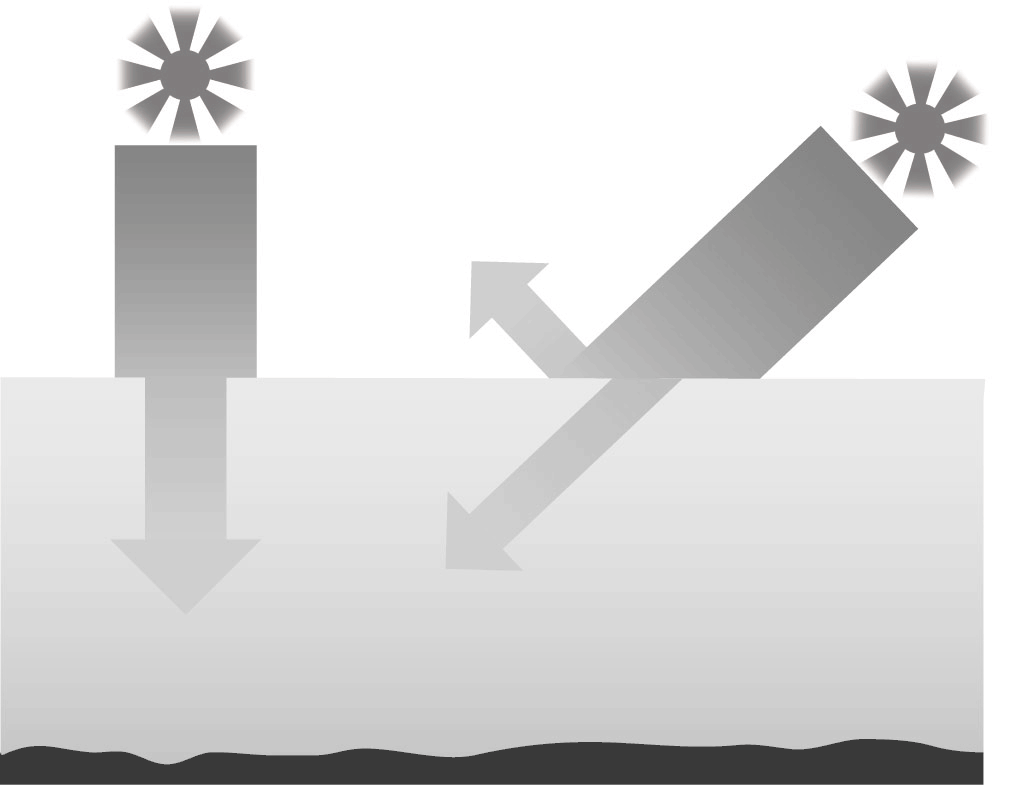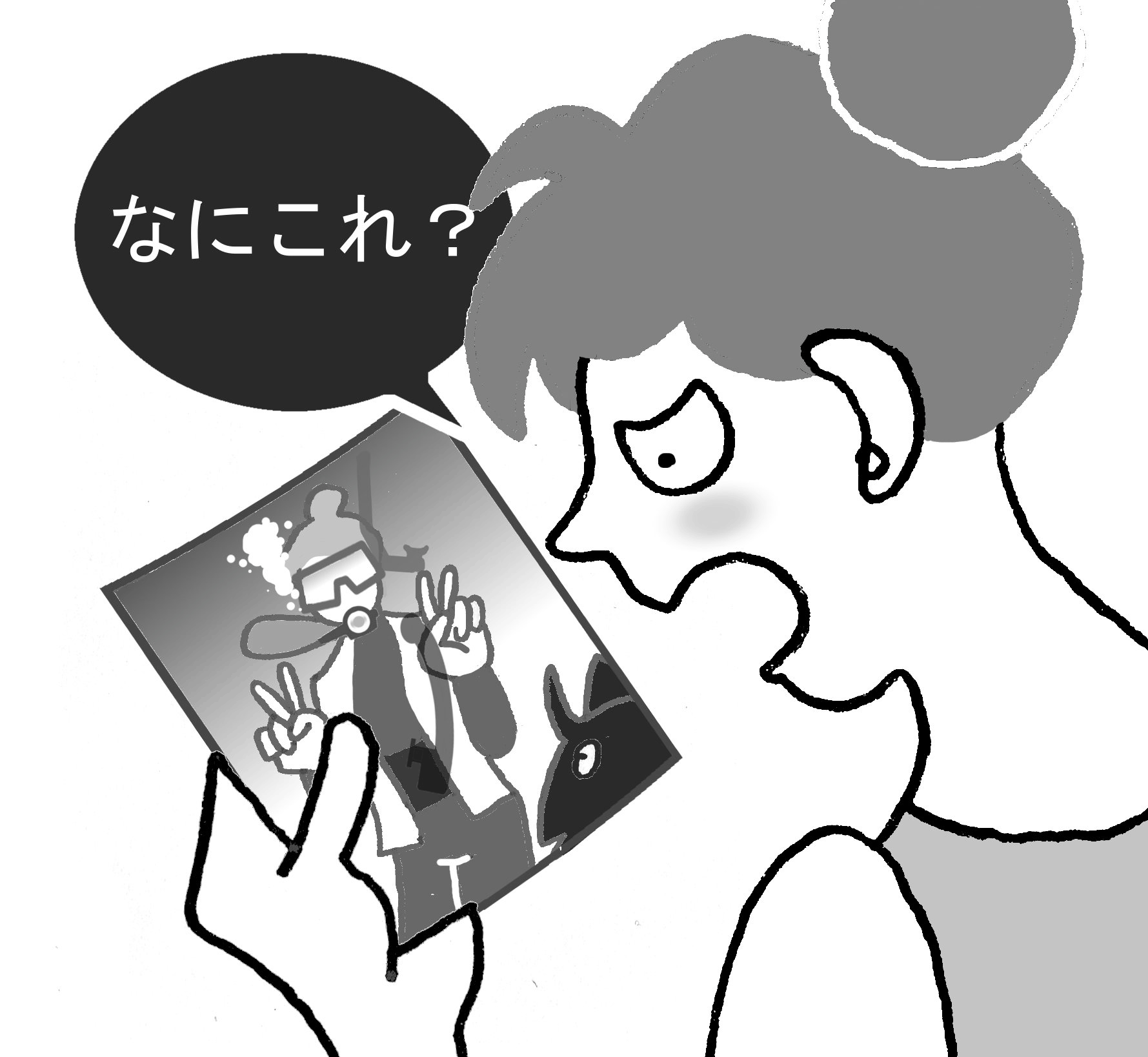■Use of natural light
Colors of light is absorbed by the water when it passes through the water.
The color goes dull in the order red, orange, yellow, green, and finally blue.
To avoid bluish photos, choose conditions that allow as much natural light as possible to get into the water and take a photo.
Let's shoot from 10 am to 2 pm in the time when the sunlight is directly above.
More sunlight enters the water when water surface is calm than when it is rough.
More sunlight enters the water on sunny and bright days than on cloudy days.
More sunlight enters the water at shallow depths than at deep depths.
Higher visibility allows more natural light to reach the water.
Let's take a photo at a shallow depth where sunlight can easily reach. |

The daytime when the sunlight hits from directly above is best
|
■Use of strobe light
The strobe covers the loss of natural light underwater.
When using strobe light, the closer you are to the subject, the less water that absorbs the light between the subject and the camera, so the color of the object can be made closer to the actual color.
In addition, even when using natural light, the color of the subject can be made closer to the actual color by using a strobe.
In some cases, a color correction filter is used to supplement the color balance.
|

It looks like a ghost unless you use a strobe |

